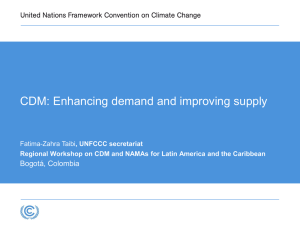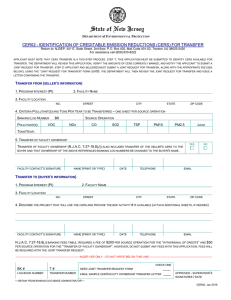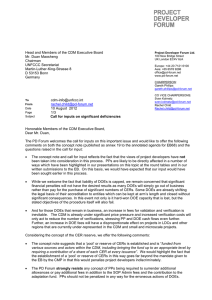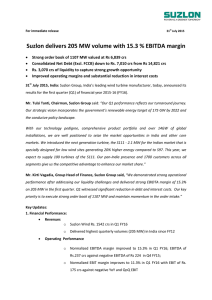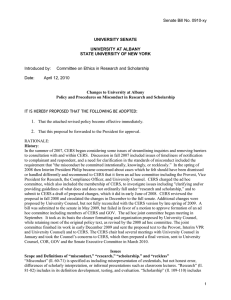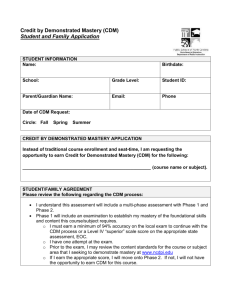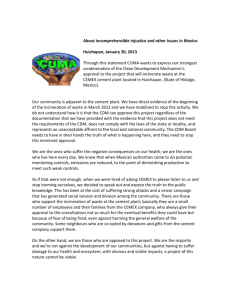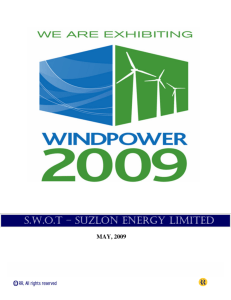Carbon trading and wind energy in India
advertisement
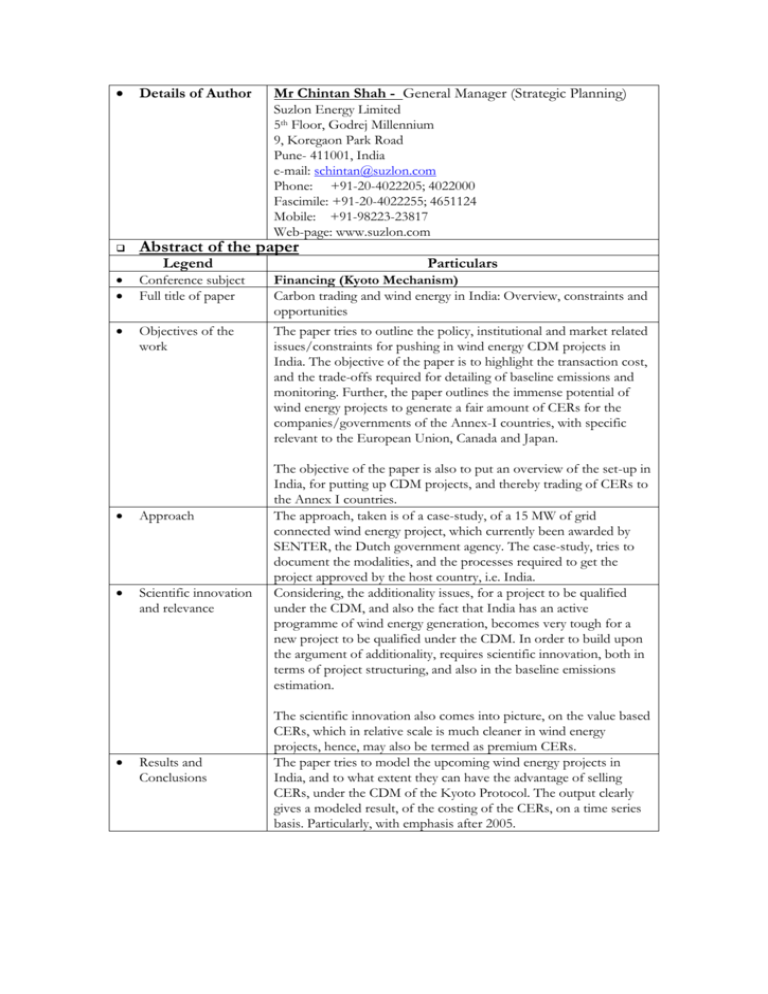
Details of Author Mr Chintan Shah - General Manager (Strategic Planning) Suzlon Energy Limited 5th Floor, Godrej Millennium 9, Koregaon Park Road Pune- 411001, India e-mail: schintan@suzlon.com Phone: +91-20-4022205; 4022000 Fascimile: +91-20-4022255; 4651124 Mobile: +91-98223-23817 Web-page: www.suzlon.com Abstract of the paper Legend Particulars Conference subject Full title of paper Financing (Kyoto Mechanism) Carbon trading and wind energy in India: Overview, constraints and opportunities Objectives of the work The paper tries to outline the policy, institutional and market related issues/constraints for pushing in wind energy CDM projects in India. The objective of the paper is to highlight the transaction cost, and the trade-offs required for detailing of baseline emissions and monitoring. Further, the paper outlines the immense potential of wind energy projects to generate a fair amount of CERs for the companies/governments of the Annex-I countries, with specific relevant to the European Union, Canada and Japan. Approach Scientific innovation and relevance Results and Conclusions The objective of the paper is also to put an overview of the set-up in India, for putting up CDM projects, and thereby trading of CERs to the Annex I countries. The approach, taken is of a case-study, of a 15 MW of grid connected wind energy project, which currently been awarded by SENTER, the Dutch government agency. The case-study, tries to document the modalities, and the processes required to get the project approved by the host country, i.e. India. Considering, the additionality issues, for a project to be qualified under the CDM, and also the fact that India has an active programme of wind energy generation, becomes very tough for a new project to be qualified under the CDM. In order to build upon the argument of additionality, requires scientific innovation, both in terms of project structuring, and also in the baseline emissions estimation. The scientific innovation also comes into picture, on the value based CERs, which in relative scale is much cleaner in wind energy projects, hence, may also be termed as premium CERs. The paper tries to model the upcoming wind energy projects in India, and to what extent they can have the advantage of selling CERs, under the CDM of the Kyoto Protocol. The output clearly gives a modeled result, of the costing of the CERs, on a time series basis. Particularly, with emphasis after 2005. About the Author: The author is currently working with Suzlon Energy Limited, which is an Indian company engaged in the field of manufacturing, implementation and maintenance of wind farms across India and US. Till date Suzlon has manufactured and installed more than 380 MW of grid connected wind turbines across the world, with size varying from 350 kW to 1250 kW. The company has in the last year entered the US market, making it the only company from developing country, exporting wind turbines to a developed country. The author before joining Suzlon Energy Limited, was working with TERI (Tata Energy Research Institute), which is the Asia’s largest research institute engaged in the field of energy and environment, and had worked with host of research institutes and organization across the globe, for the cause of wind energy in particular, and renewable energy and climate change in general.
